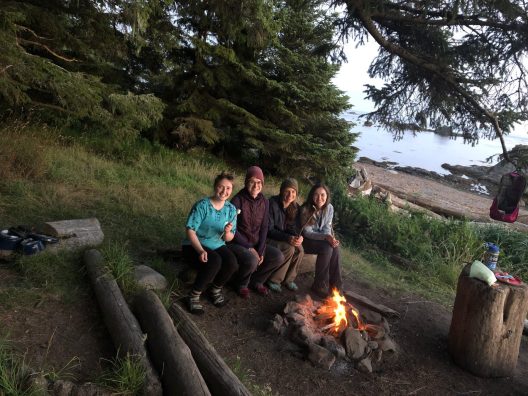Spring 2023 Graduation
Congratulations to all our graduates!
To celebrate this year’s class, we have posted photos and anecdotes of our graduates on this page. Click a name below to expand and learn more about them!
Bachelor of Science
Vahid Hosoda
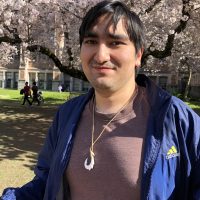 Thesis
Thesis
Effects on hydrology and late fall spawning salmon
The timing of hydrology contains a peak of coho and chum salmon responding to the regime in November. We find this important as the hydrological regime can change the schedules for spawning salmon.
Adviser
Daniel Schindler
What is your best/favorite memory during your time in SAFS?
Taking time at classes electrofishing and nature field trips at North Cascades.
What was your favorite FISH class and why?
FSH 312.
What kind of things do you like to do when you’re not being a SAFS student?
Fishing.
Who would you like to thank/recognize and why?
Daniel Schindler because he was wonderful.
Do you have a favorite quote/saying?
“To infinity and beyond” – Buzz
Abi Huber
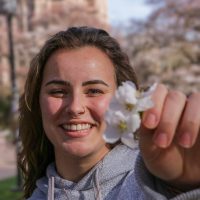 Thesis
Thesis
Cryptobenthic Reef Fishes: A taxonomic review of the genus Istigobius
My project looked at the evolutionary relationships of small reef fishes using an integrative taxonomic approach (DNA sequencing, live photographs, and preserved specimens)!
Adviser
Luke Tornabene
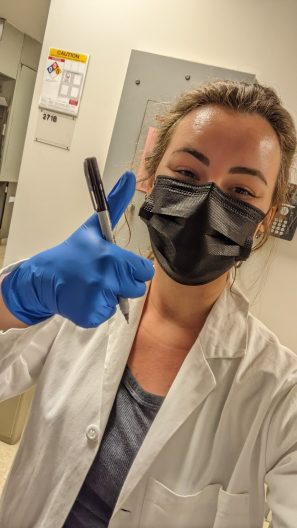 What was your favorite FISH class and why?
What was your favorite FISH class and why?
FISH 311 and FISH 270 got me SO excited about fish anatomy/physiology and evolutionary relationships. These classes are a lot of work, but really fun to take. Both Luke and Jose are amazing teachers.
What is your go-to comfort food?
Anything with rice.
What kind of things do you like to do when you’re not being a SAFS student?
Gardening, weightlifting, and knitting.
Who would you like to thank/recognize and why?
Samantha and Michael – your hearts, passion, and dedication to ensure students succeed at SAFS and UW do NOT go unnoticed. Thank you for the countless hours and hard work you’ve put into helping me and other students. You both, honestly, are the heart and soul of SAFS. Thank you for all the guidance you’ve given me over the past four years <3
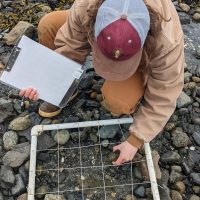
Do you have a favorite quote/saying?
“Beautiful is too small and simple a word to capture the exquisitely complex human phenomenon you are. Every atom of you was plucked in the quiet cosmic moment between supernovas and stars. A carefully chosen palette of your skin, your eyes, your muscles and bones from sunsets and skies” – Nikita Gill
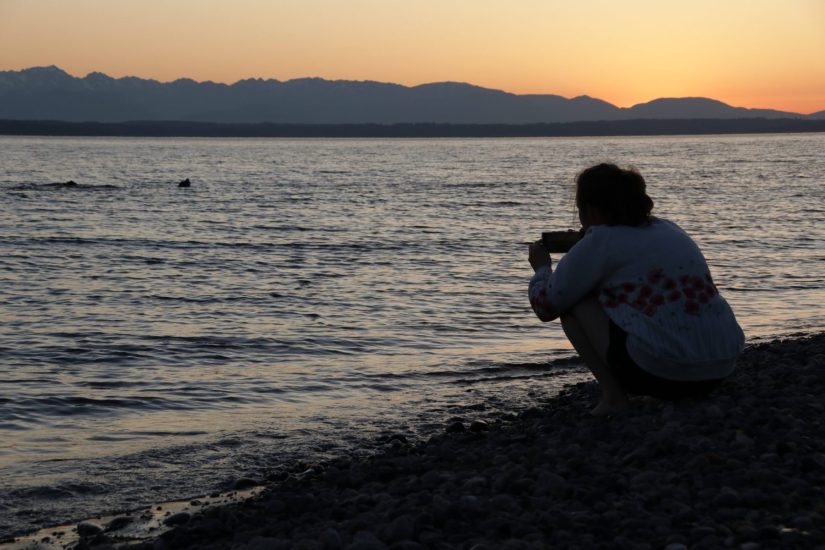
Adam Nguyen
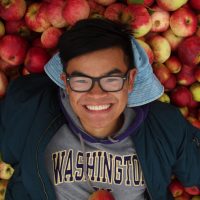 Thesis
Thesis
What in the Whale? A parasite analysis of the southern resident killer whales in the Salish Sea
An analysis of the widespread infection and abundance of parasite assemblages in the southern resident killer whale.
Adviser
Chelsea Wood, Natalie Mastick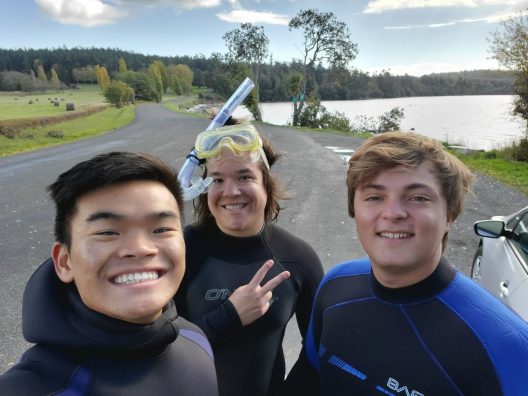
What is your best/favorite memory during your time in SAFS?
Going on the Rachel Carson as part of my field trip for FISH 312.
What was your favorite FISH class and why?
FISH 312.
What is your go-to comfort food?
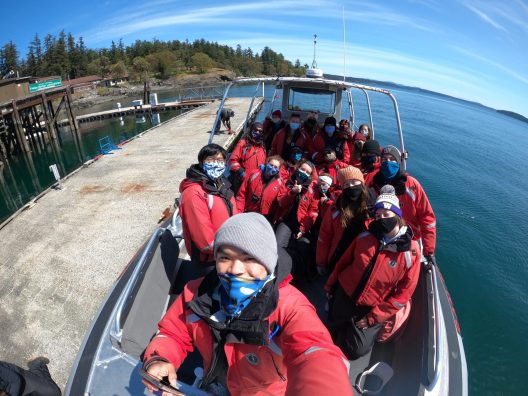
Any kind of noodles.
What kind of things do you like to do when you’re not being a SAFS student?
Go whale watching on San Juan Island.
Do you have any accomplishments and activities while at the SAFS you would like to highlight?
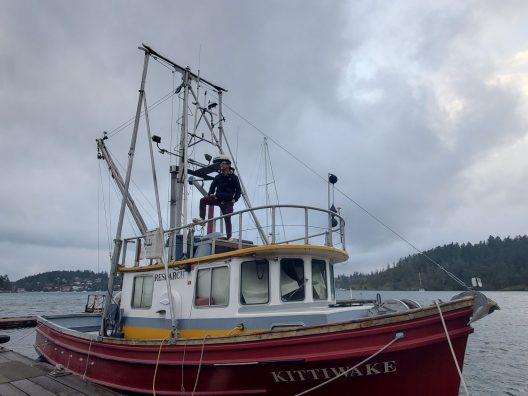
I would like to highlight going on a whale watching vessel as part of my Marine Mammals class with Dr. Deborah Giles. It was an experience I will never forget as I had such a wonderful time going whale and pinniped watching.
Who would you like to thank/recognize and why?
I would like to thank Dr. Chelsea Wood and Natalie Mastick for taking me on as a capstone student and being so incredibly supportive of my work.
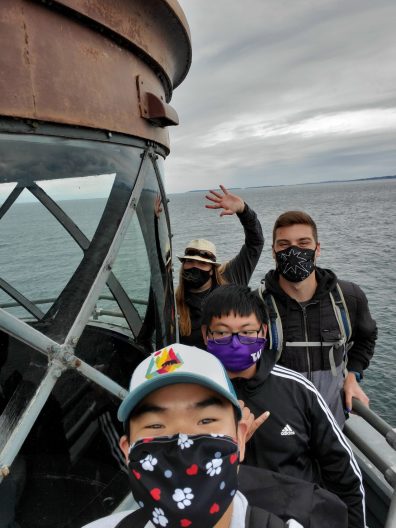
Ana Olsen
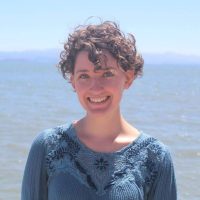 Thesis
Thesis
Effects of Sea Level Rise and European Green Crab Invasion on California Salt Marsh Infauna
Over the summer for my NOAA Hollings internship, I collected infauna from sediment traps in Bullhead Flat, China Camp State Park, SF Bay, California, from experimental plots with different levels of the European Green Crab Carcinus maenas and tidal inundation. Then this year I counted and identified the infauna to see how they changed in abundance and diversity.
Adviser
Sean McDonald
What was your favorite FISH class and why?
FISH 406 Parasite Ecology with Dr. Chelsea Wood. This class opened my ideas to viewing everything through the parasite lens. It also greatly improved my dinner conversation, although maybe not according to my housemates.
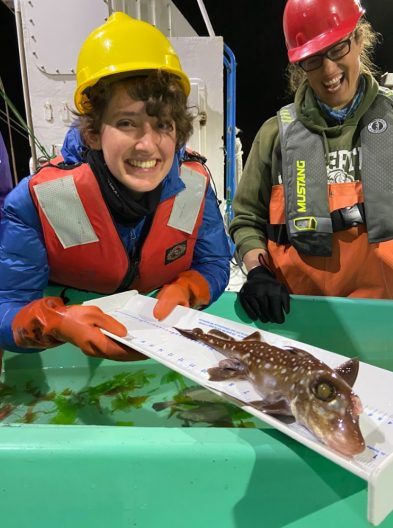
What kind of things do you like to do when you’re not being a SAFS student?
Crafting, hiking, and DnD!
Do you have any accomplishments and activities while at the SAFS you would like to highlight?
NOAA Hollings internship, SAFS Faculty Merit award.
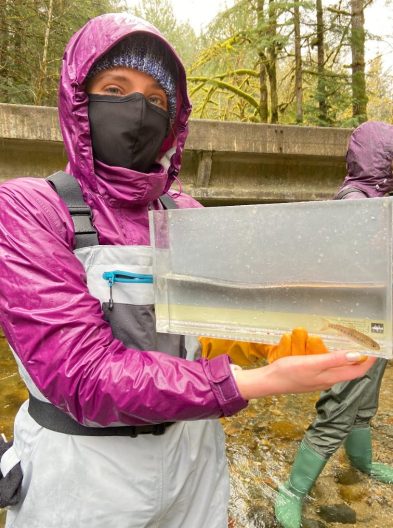
Juno O'Neill
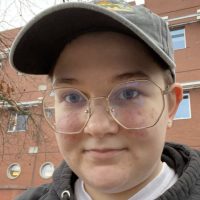 Thesis
Thesis
Environmental Influences on Periphyton Carbon and Nitrogen Stable Isotopes
I am looking at the composition of carbon and nitrogen stable isotopes found in the algae found on rocks in the Methow river! Looking at isotopes allows me to look at where carbon and nitrogen come from and what influences them in streams, which is important for understanding nutrient cycling.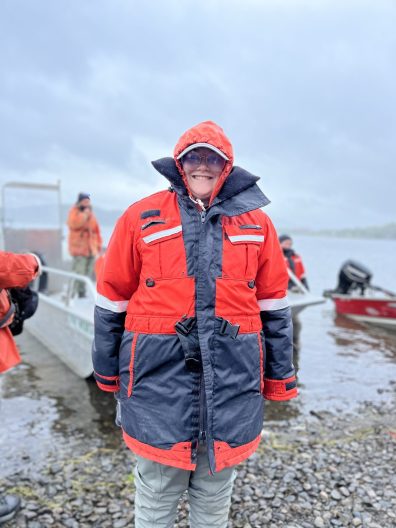
Adviser
Gordon Holtgrieve
What is your best/favorite memory during your time in SAFS?
The Alaska Salmon Program! It was super fun and and I learned so much while up there. It was amazing to not only see such a huge amount of salmon, but also see the beautiful Alaska scenery! It was an experience I will never forget.
What was your favorite FISH class and why?
Watershed Ecology! This class got me interested in freshwater ecology and biology and was also my gateway to my capstone project. I am forever changed now by my knowledge, and am so happy I can now annoy people with facts about macroinvertebrates and the River Continuum Concept!
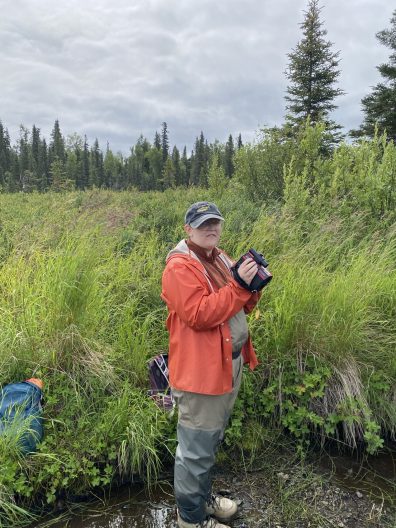
What is your go-to comfort food?
Soup. Especially chicken and dumplings.
What kind of things do you like to do when you’re not being a SAFS student?
I love to draw and write! I also have been learning coding and hope to start making my own websites and video games eventually.
Who would you like to thank/recognize and why?
THANK YOU TO MY GIRLFRIEND, LIZ, KAT, JO, AND EVERYONE ELSE IN SAFS! You have made my years in college more fun than I could have imagined and have supported me through so much!
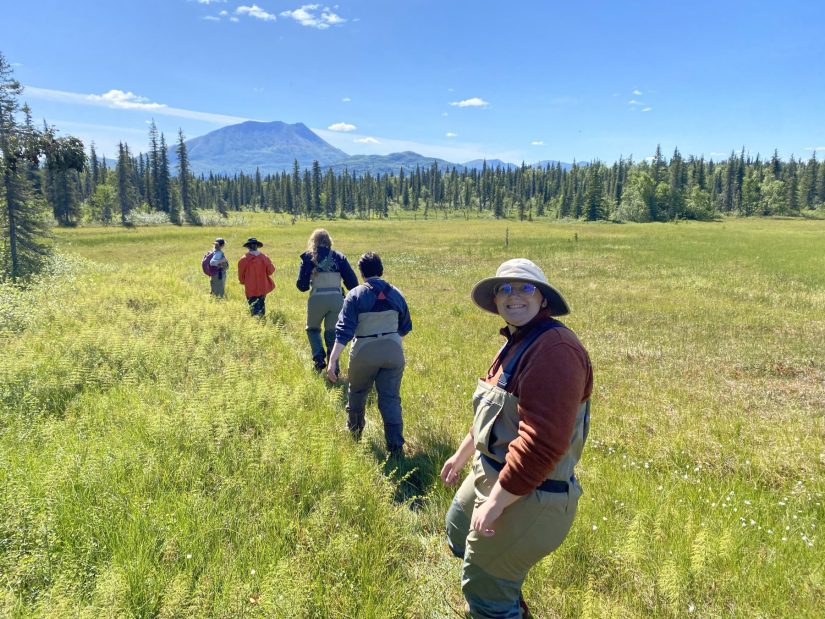
Jada Rasmussen
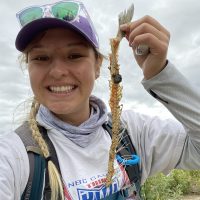 Thesis
Thesis
How water temperature may affect salmon-bear interactions in streams
I am looking at how water temperature affects salmon reactions to being startled and what direction they are more likely to swim to safety. The areas we sampled had a deep pool on one end of the reach and a riffle on the other end. We found that in cold temperatures salmon are less likely to swim into more vulnerable spaces (riffles) and be more selective of where they are swimming to for safety.
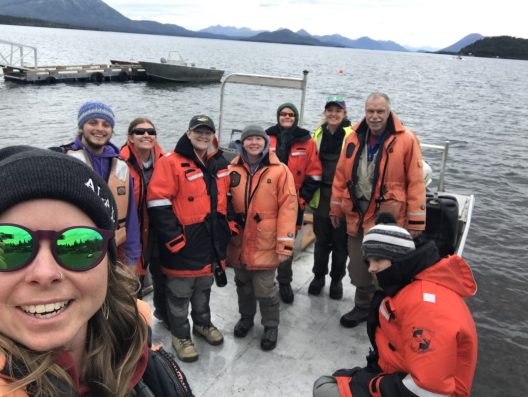
Adviser
Daniel Schindler
What is your best/favorite memory during your time in SAFS?
My favorite memory at SAFS is any field trip/field opportunity I have ever attended while here. Whether its tide pooling, stream electro-shocking, or being in Bristol Bay for 4 to 5 weeks spending every day in the field. These are all meaningful opportunities that helped me get to know my awesome classmates and gave us some field experience that is necessary to our careers.
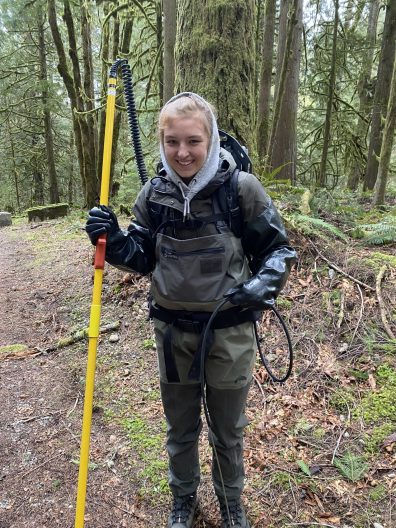
What was your favorite FISH class and why?
My favorite FISH class was FISH 497 – Special topics – The Alaska Salmon Program class for undergrads. This class is awesome for getting field experience and finding out if you want to work in the field or not, it also looks really good on a resume. I loved this class a ton because we spend every day in the field and applying our knowledge from all of our classes with field work and even some lab work. When people say that you could walk across a river of red – this class helped me put that into perspective and realize that the stories of a river of red is not made up.

What is your go-to comfort food?
GOOD Mexican food or chicken top ramen.
What kind of things do you like to do when you’re not being a SAFS student?
I like to hang out with the Native students on campus.
Do you have any accomplishments and activities while at the SAFS you would like to highlight?
I was able to go to Alaska for a summer class and spend an extra week there at the camp to collect data for my capstone project.
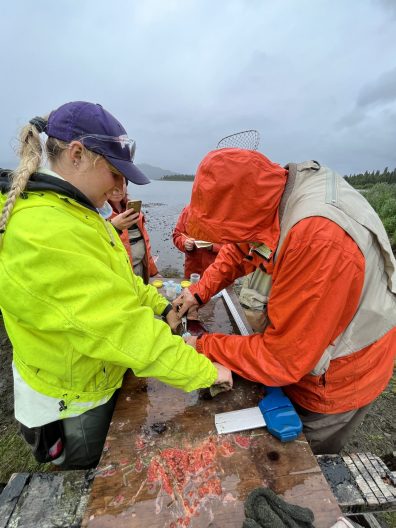
Who would you like to thank/recognize and why?
I would like to thank my boyfriend Randy for bearing with me on not having much free time or energy outside of doing homework and school & supporting me through the last few years during school. My parents for persisting on me going to college, being there to support me at every barrier when I asked them for help, and for raising me to be a ‘good kid’. I would like to recognize Daniel Schindler for helping me so much with my capstone and letting me stay an extra week in Alaska after the ASP class to collect data for my capstone data.
Do you have a favorite quote/saying?
All models are wrong but some are useful. – George Box
Levi Rucka
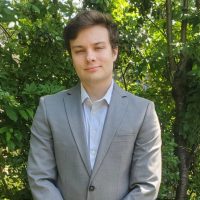 Thesis
Thesis
Habitat Preferences of Juvenile Steelhead and Coho Salmon in the Skagit River, WA
Habitat preferences of Juvenile Coho Salmon and Steelhead in the Skagit River, WA.
Adviser
Daniel Schindler
What is your best/favorite memory during your time in SAFS?
The Alaska Salmon Program! It was 1 month of pure action in the remote wilderness of Alaska! I learned a lot about what it means to work in a team environment and conduct fieldwork.
What was your favorite FISH class and why?
Fish 497, the Alaska Salmon Program.
What is your go-to comfort food?
Flan.
What kind of things do you like to do when you’re not being a SAFS student?
Hang out, party, play games, watch movies, practice guitar.
Do you have any accomplishments and activities while at the SAFS you would like to highlight?
Galen and Helen Maxfield Endowed Fisheries Scholarship.
Who would you like to thank/recognize and why?
My Capstone peers, Nick Chambers, and my parents.
Do you have a favorite quote/saying?
“Counting fish is like counting trees, except they are invisible and they keep moving” – John Shepherd
Bill Souta Saechao
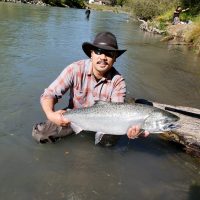 Thesis
Thesis
Trophic triangles: What is the net effect of longfin smelt (Spirinchus thaleichthys) density on juvenile sockeye salmon (Oncorhynchus nerka) growth in Lake Washington?
The study aims to discover whether longfin smelt abundance impacts the growth of sockeye salmon. In Lake Washington, various fish species compete with one another for zooplankton, making it difficult to determine how the growth of different fish species may be related to overlaps in their diet.
Adviser
Thomas Quinn
What is your best/favorite memory during your time in SAFS?
Taking FISH 310 Biology of Shellfish with Dr. Gregory C. Jensen during my senior year was the best. The class allowed me to escape from my other classes to examine shellfish diversity closely. My favorite memory was learning about marine flatworms’ reproductive strategies. Flatworms having both male and female reproductive organs use their phalluses to try and pierce through each other’s skin to inseminate one another during mating in a ritual called “penis fencing” was memorable.
What was your favorite FISH class and why?
My favorite class during my time at SAFS had to be FISH 447 Watershed Ecology and Management. Learning about river ecosystems from a watershed perspective has helped me understand the value of preserving natural resources and the relationships between humans and the environment.
What is your go-to comfort food?
McDonald’s Filet-o-fish!
What kind of things do you like to do when you’re not being a SAFS student?
FISHING!
Who would you like to thank/recognize and why?
I thank Dr. Thomas P. Quinn for taking me under his wing and guiding me through my capstone project. Thanks to my family for supporting me and allowing me to self-discover my passion. I also want to recognize Samantha Scherer and Michael Martinez as the best advisors who helped me through this journey, especially during the pandemic.
Henry Stier
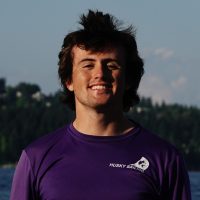 Thesis
Thesis
Effects of Climate Variation and Fish Grazing Pressure on Abundance and Density of Four Zooplankton Genera in Iliamna Lake
My capstone research is focused on how four different groups of zooplankton in Iliamna Lake, Alaska have reacted to the shifts in the abiotic factors of date of ice-out and lake temperatures. I am also examining how they have reacted to shifts in grazing pressure by juvenile sockeye salmon, three-spined stickleback, and nine-spined stickleback.
Adviser
Thomas Quinn
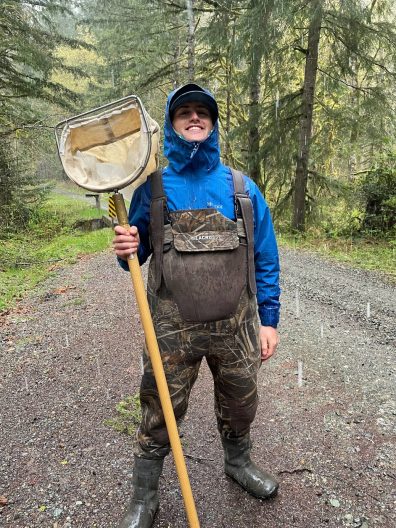
What is your best/favorite memory during your time in SAFS?
My favorite memories while at SAFS were probably any time spent with my classmates trying to study but bursting into laughter about every 30 seconds for no reason.
What was your favorite FISH class and why?
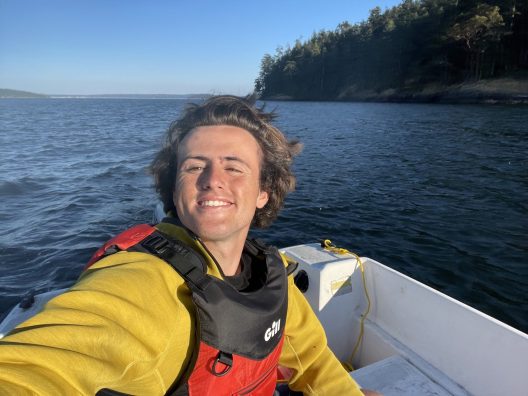
Fish 311. This was my favorite class because I am huge fish nerd, and learning the biology and physiology of so many different types of fish was such a blast.
What is your go-to comfort food?
Toast with butter and honey, or chili oil noodles.
What kind of things do you like to do when you’re not being a SAFS student?
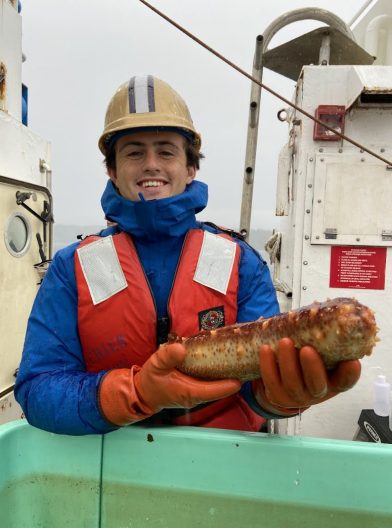
Some of my fondest memories at UW were during my time on the Husky Sailing Team. Sailing is just about my favorite thing in the world to do, and I got to travel all over the country for regattas with the team. I also love diving and being in the water for literally any reason. While at UW, I got the chance to become an AAUS Scientific Diver. I also enjoy baking and spending time reading in the sun.
Who would you like to thank/recognize and why?
I would first and foremost like to thank my parents Rae and Don, and my sister Aminah. Without them I absolutely would not be where I am today. I would also like to thank all of my SAFS cohort, your friendship and camaraderie pushed me through the tough times. Thank you to Dr. Thomas Quinn for his constant support of my capstone research, and his excellent edits and suggestions for my work. I would like to thank all of the friends I made on the sailing team and at UW, Kat Arnett in particular.
Do you have a favorite quote/saying?
“Fish are just like trees, except you can’t see them and they’re always moving” -most recently George Pess, but I don’t know who actually said this first.
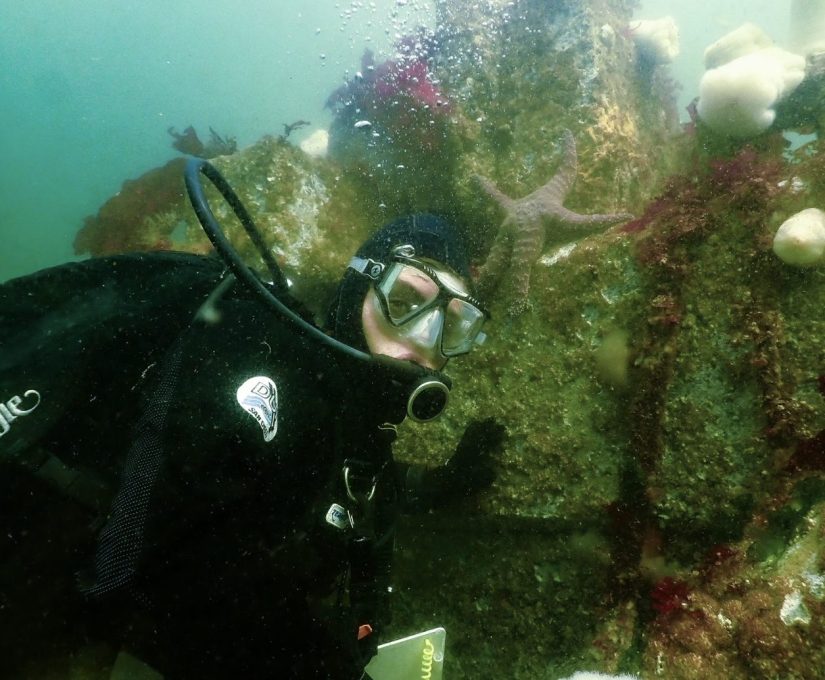
Liz Voytas
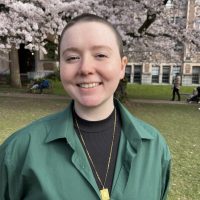 Thesis
Thesis
Stable isotope analysis use to assess Pacific salmon consumption in brown bears as they age
Analysis of bear hair diet composition to see how much salmon they eat as they age. Hair was collected from Aleknagik, Alaska and DNA was used to identify individual bears to watch how much food they eat over the years. 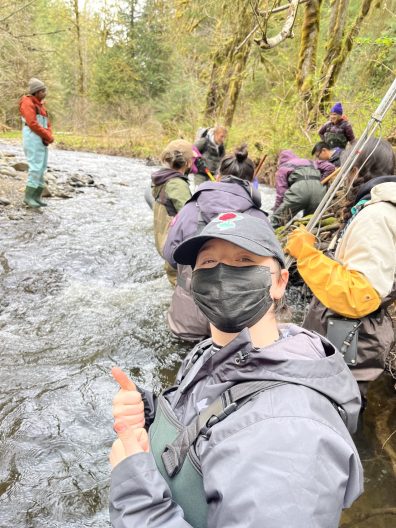
Adviser
Tom Quinn
What is your best/favorite memory during your time in SAFS?
Going to Alaska over the summer and being able to work hands on at a research camp.
What was your favorite FISH class and why?
Fisheries Ecology with Chelsea Wood. It was so much fun to go electrofishing and trawling on the Rachel Carson. That experience made me so confident in knowing that SAFS was what I wanted to do.
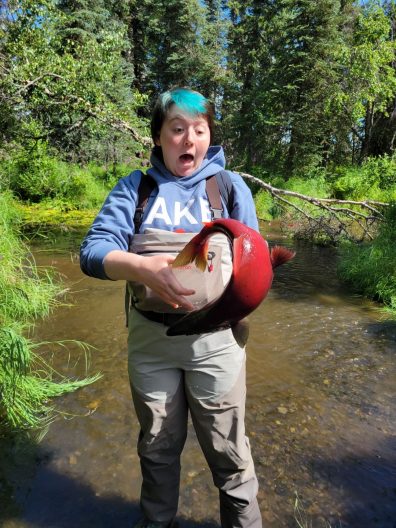
What is your go-to comfort food?
Mac and cheese.
What kind of things do you like to do when you’re not being a SAFS student?
I love to go swing dancing.
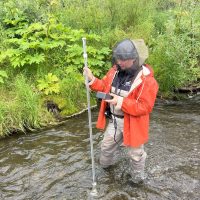
Do you have any accomplishments and activities while at the SAFS you would like to highlight?
Going to Alaska with the Alaska Salmon Program.
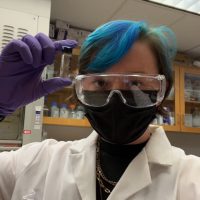
Who would you like to thank/recognize and why?
I want to thank my partner, David, for continuous support, my awesome friends and study group over the years, and my family for always encouraging me to be myself. I also want to thank Tom Quinn for being a spectacular advisor and helping me to be my best.
Master of Science
Olivia Cattau
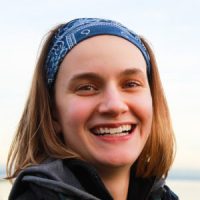 Thesis
Thesis
Understanding tools and resources for maturation control in Bivalvia
My thesis covered the physiological impact and the genetic impact of triploidy (rendered sterile by inbreeding) in Geoduck clams and Pacific oysters, which are primary species of concern for the aquaculture industry.
Adviser
Steven Roberts
What is your best/favorite memory during your time in SAFS?
Retreat at Friday Harbor Labs in 2022.
What was your favorite FISH class and why?
I still have a traumatic, but fun, memory of my first SAFS class with Lorenz Hauser over Zoom taking FISH 444: Conservation Genetics. He famously told me when I complained about getting a B on a homework assignment “Olivia, you are in graduate school now, no one cares about your grades”.
What is your go-to comfort food?
Donuts from The Donut Factory.
What kind of things do you like to do when you’re not being a SAFS student?
I coached track and field and cross country at Ingraham High School in Seattle.
Do you have any accomplishments and activities while at the SAFS you would like to highlight?
I presented both of my chapters at the National Shellfish Association meeting in March 2023 in Baltimore, Maryland.
Who would you like to thank/recognize and why?
I want to thank my lab mates, particularly Zach, because without him I would not have finished my MS degree at all. Getting through COVID and not seeing my advisor in person for months on end was difficult and my fellow graduate students held me together!
Do you have a favorite quote/saying?
“You Better Work” – RuPaul
Kimi Hiwatari
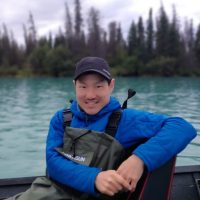 Thesis
Thesis
Multispecies fisheries management in Japan’s offshore waters: the case of Hokkaido Pacific offshore trawl
Japan is implementing a fisheries policy reform shifting from input to output control. I assessed the performance of Japan’s traditional fisheries management on the bio-socio-economic aspects of a multispecies fishery and simulated the impacts of the new policy.
Adviser
Chris Anderson, Ray Hilborn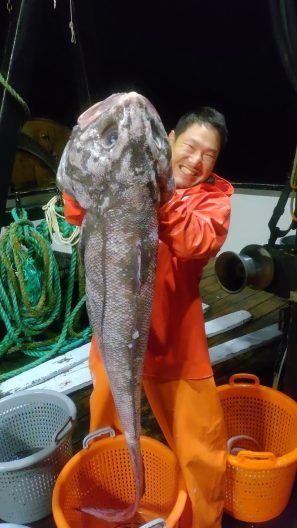
What is your best/favorite memory during your time in SAFS?
Salmon research at Lake Nerka, Alaska with Daniel Schindler, Ray Hilborn, and many other nice guys. Tagging a bunch of sockeye and checking to see how many were being eaten by bears every morning was just fun for me. I will never forget the beautiful grayling I fished in the evenings.
What was your favorite FISH class and why?
FISH 561, Resource Economics by Chris Anderson, for an interesting salmon blind tasting. His teaching method was a fusion of fisheries science and economics, which was very new to me.
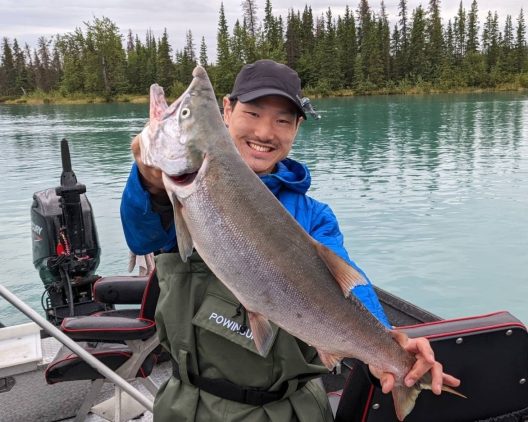
What kind of things do you like to do when you’re not being a SAFS student?
Fishing, cooking fish, and Kendo, a Japanese martial art.
Who would you like to thank/recognize and why?
My lab mates who were great talking partners and advisors, and my mentor for his excellent mentoring and for introducing me to an exciting trawl survey.
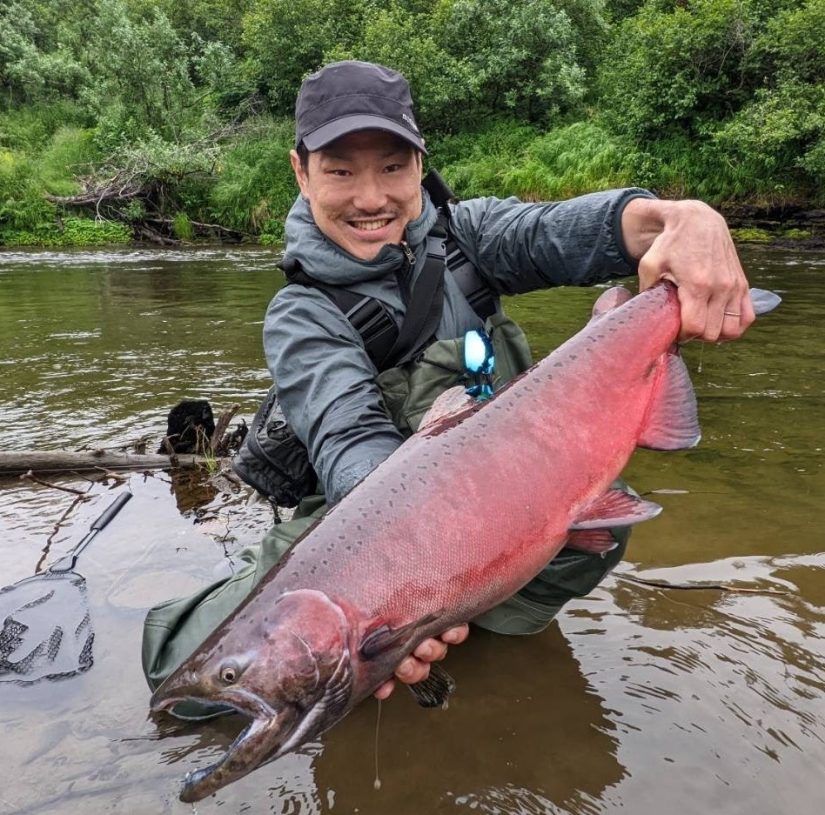
Anita Wray
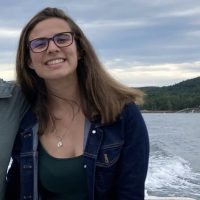 Thesis
Thesis
Population Structure in Puget Sound Rockfishes (Sebastes spp.): Using Genetics To Inform Management Of A Vulnerable Species Complex
My thesis investigated population structure and the extent of hybridization of eight Puget Sound rockfishes, a vulnerable species complex. This information can inform future directions for management of rockfishes within Washington state.
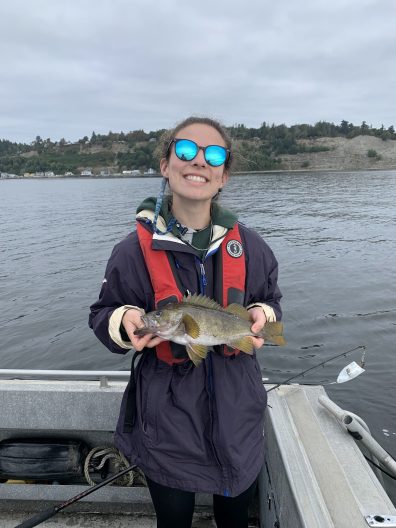
Adviser
Lorenz Hauser
What is your go-to comfort food?
Any of the chocolate goodies at Trader Joes.
What kind of things do you like to do when you’re not being a SAFS student?
Ski, climb, and sail!
Do you have any accomplishments and activities while at the SAFS you would like to highlight?
During my time at SAFS, I also worked at Washington Sea Grant on their education team. I was able to build curriculum, host workshops and outreach events, and teach a variety of topics to middle and high school students.
Who would you like to thank/recognize and why?
My cohort who entered SAFS in the pandemic yet established such a fantastic community for me.
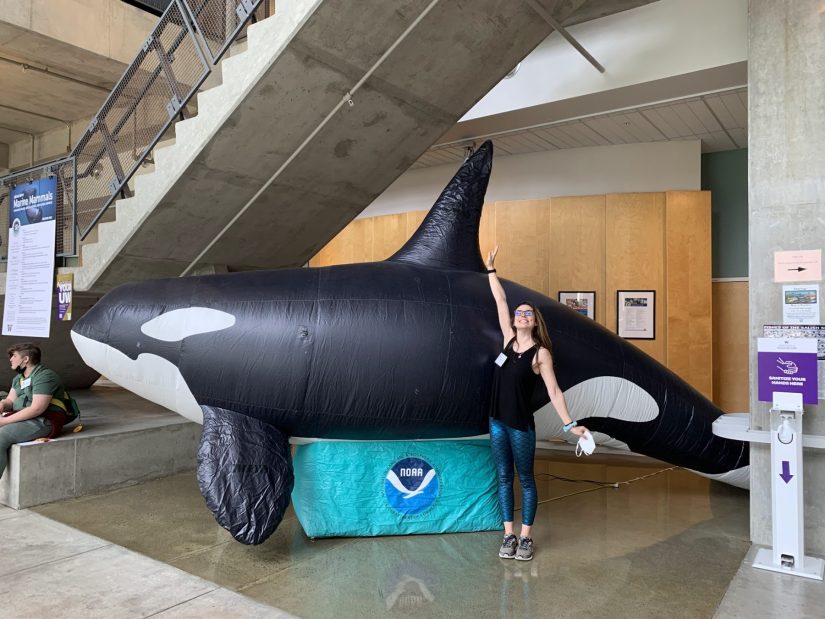
Karl Bjorndahl Veggerby
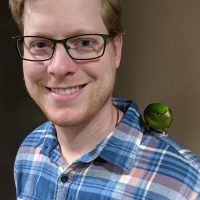 Thesis
Thesis
Shellfish aquaculture farms as foraging habitat for nearshore fishes and crabs
We studied how nearshore fish and crabs in Puget Sound used oyster farm habitat for foraging, and how that compared to un-farmed nearshore areas such as eelgrass meadows and mudflats.
Adviser
Mark Scheuerell, Chelsea Wood, Beth Sanderson
What is your best/favorite memory during your time in SAFS?
Giving a leaky boot talk at GSS about our unsuccessful attempt to win the Nenana Ice Classic.
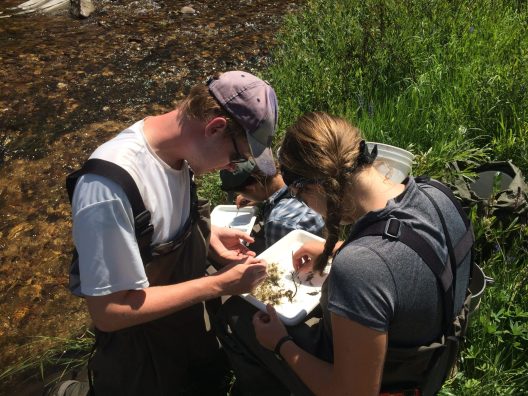
What was your favorite FISH class and why?
Beautiful Graphics in R – It was so interesting and fun. I used to hate fiddling with R code to change plots around but after taking this class and learning tons of tips and tricks I now find it really fun. Finding the best way to visually present data in a clear and uncluttered format is a fun challenge.
What is your go-to comfort food?
Cheez It.
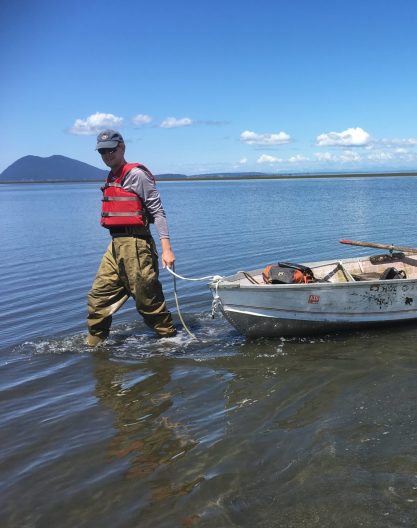
What kind of things do you like to do when you’re not being a SAFS student?
Building custom furniture in my Dad’s woodshop.
Do you have any accomplishments and activities while at the SAFS you would like to highlight?
I wrote a paper about shrimp with Chelsea using the yearly trawl data from FISH 312. That was a fun side project not at all related to my thesis. It’s currently in review at Marine and Coastal Fisheries.
Who would you like to thank/recognize and why?
My committee has been awesome. I’ve learned a lot from each of them.
Doctor of Philosophy
Erica Escajeda
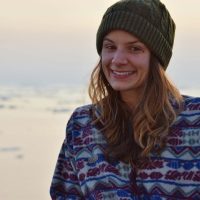 Dissertation
Dissertation
The ecology, sonic environment, and acoustic occurrence of subarctic baleen whales in the Bering Strait over a decade of change
Observations of subarctic baleen whales in the Pacific Arctic have increased over the past decade, raising the question of whether their presence is a sign of habitat changes brought on by climate change, and/or a result of their populations recovering from whaling. Though fin, humpback, and gray whales are now regularly observed in the Chukchi Sea, their presence seems to vary from year to year. For my research, I investigate what could explain variability in their presence as well as examine how ships impact their acoustic habitat.
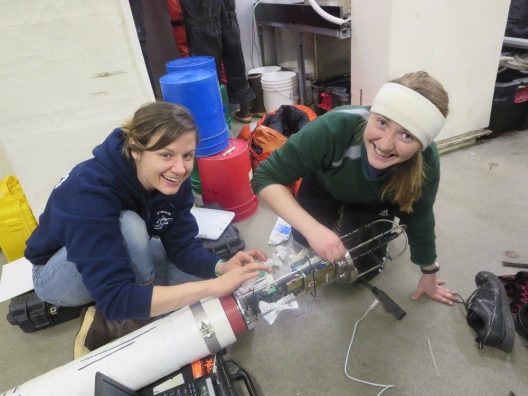 Advisers
Advisers
Kristin Laidre
What is your best/favorite memory during your time in SAFS?
Working as a teaching assistant, and later, as a predoctoral instructor. I loved interacting with undergraduate students and contributing to their training as scientific thinkers and explorers. My favorite part of teaching was always the field trips since that is when the students had a chance to play, explore, and have fun. Another fond memory is the backpacking trip with my lab mates to Olympic National Park where we explore the beaches, told stories by the fire, and got chased out of our camp spot by a mama bear (well, the bear didn’t actually chase us, we elected to move out of the way in case she came looking for our food!).
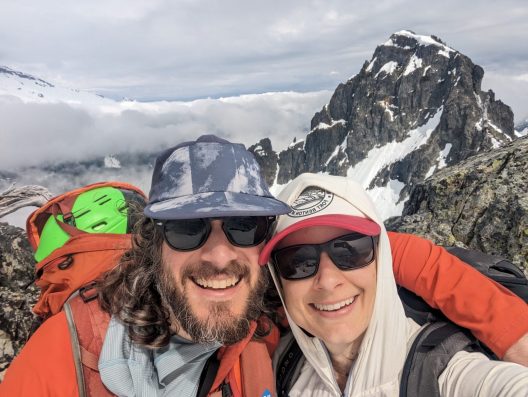
What was your favorite FISH class and why?
I really enjoyed FISH 538 Fisheries Acoustics. My favorite memory of that class was waking up early to conduct an acoustic survey of Lake Washington on board the RV Rachel Carson. I may be biased though since I work with acoustics, so I was very happy to finally take an acoustics class!
What is your go-to comfort food?
Vegan Crunchwrap Supreme from Taco Bell with their Fire sauce.
What kind of things do you like to do when you’re not being a SAFS student?
Adventuring in the woods – hiking, backpacking, skiing, gardening, canoeing, birding, and mushrooming. I also love movies and pop culture, so catching the latest art house film or seeing live music is also high on the list.
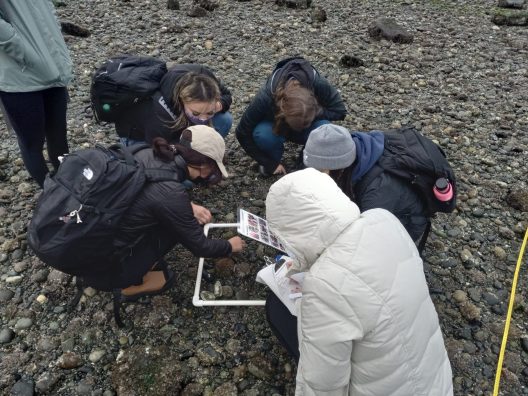
Do you have any accomplishments and activities while at SAFS you would like to highlight?
I am very proud of the work that I did with Seattle MESA and the UW SACNAS Chapter. One of my proud achievements was organizing an event where Native middle and high school students from across the Seattle area visited the UW campus to experience a “day in the life” of a college student. The event, titled “Native Scholars on the Rise UW Mentorship Day,” began with an opening ceremony at the wǝɫǝbʔaltxʷ – Intellectual House, followed by participating in a college class of the students’ choosing, a campus tour, lab tours and activities, a visit to the Burke Museum’s Fish Collection, and ending with a dinner with the students’ families at the Samuel E. Kelly Ethnic Cultural Center. My hope for the event was that students would come away from the experience excited about applying to college.
Who would you like to thank/recognize and why?
I am very blessed to have an amazing community of friends and a very supportive family who all cheered me and kept me motivated throughout this journey. I am also grateful for the SAFS community–all the students, professors, and staff who made SAFS such a welcoming and nurturing environment for conducting my graduate work. I cannot imagine a better place to have received my scientific training!
Do you have a favorite quote/saying?
My favorite quote that sums up how I think about science is “The happiness of the bee and the dolphin is to exist. For man it is to know that and to wonder at it” by Jacques Yves Cousteau. For any undergraduate or graduate student who is struggling, keep the following quote in mind: “Do your work, then step back. The only path to serenity” by Lao Tzu.
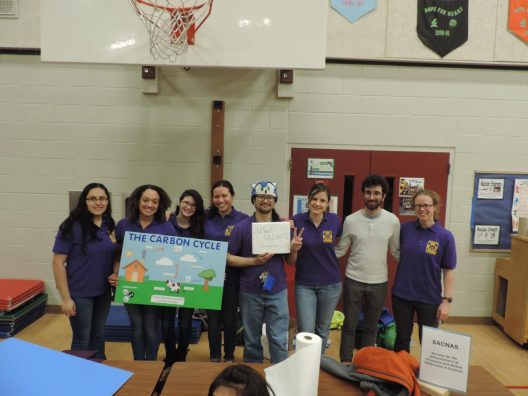
Shelley Johnson
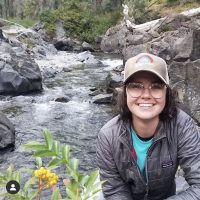 Dissertation
Dissertation
Quantifying food web interactions and limitations for native salmonids in Ross Lake, WA and implications for the introduction of anadromous salmonids
In my dissertation, I broadly evaluated how reservoir food web interactions can influence growth and survival of native fish species, and how these interactions can be driven by emerging challenges in reservoirs such as invasive species, climate change, and water Visit Site operations. My research focused specifically in Ross Lake, a hydropower reservoir in the Upper Skagit River in Washington. The main goals of my research were to quantify species interactions following the introduction of a nonnative species (redside shiner) to 1) identify whether prey availability and predation limit native salmonid growth and production, and 2) evaluate these limitations for proposed introductions of anadromous salmonids in Ross Lake.
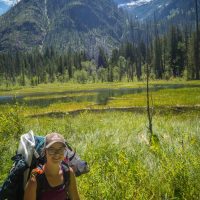
Advisers
Julian Olden and Dave Beauchamp
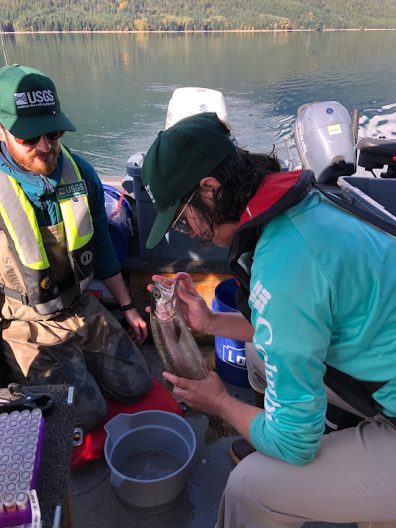
What is your best/favorite memory during your time in SAFS?
Lots of great memories to choose from, but the grad student retreat at Friday Harbor Labs was definitely one of them!
What was your favorite FISH class and why?
I really enjoyed Hot Topics in year 1. It was nice having a class for the cohort to get to know each other, and have some fun conversations about a variety of research topics that are outside of our specialties. It was also cool getting exposure to different faculty and research scientists who led the discussions each week.
What is your go-to comfort food?
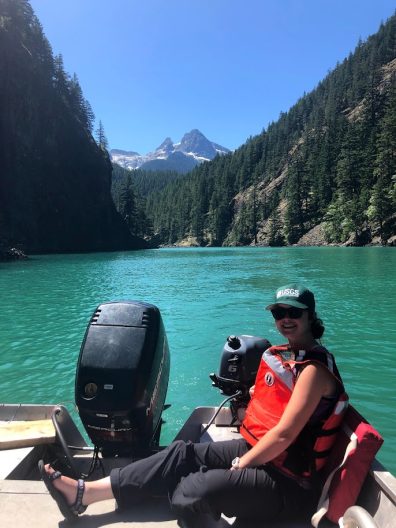
Nothing better than a Dick’s cheeseburger and fries after a late night in the lab or a long day in the field
What kind of things do you like to do when you’re not being a SAFS student?
Lots of hobbies. A few include hiking, backpacking, skiing, kayaking, gardening, cooking, watching TV.
Do you have any accomplishments and activities while at SAFS you would like to highlight?
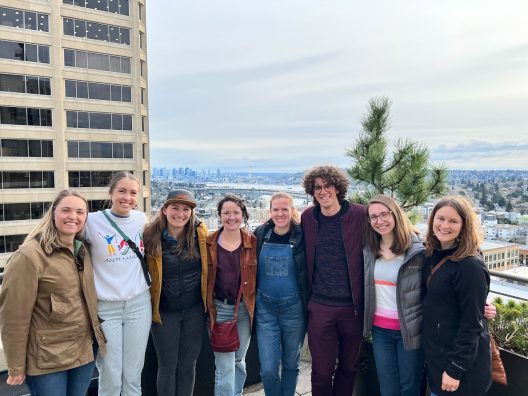
I served as the department steward for our grad student union, UAW 4121. Our union is such an important resource and support for grads (and post-docs and researchers!), and I’m glad I had that opportunity to be involved and work with some amazing students that are dedicated to improving the health and well-being of our academic student employees.
Who would you like to thank/recognize and why?
My advisor Dave, who always encouraged and supported me when things were tough, and the rest of my all-star committee (Julian, Tom, and Aaron) who provided some really valuable feedback and ideas and were a fun group to work with. My research wouldn’t have been possible without a lot of hard work from my WFRC colleagues, who also provided a fun and supportive environment to work with, and Jeff Duda in particular, whose mentorship over the last many years helped get me where I am today. I’m also thankful for my parents who have encouraged and supported me throughout this process, my sister and other friends who were there for the needed vacations and relaxation, and lastly Greg, for your patience, dedication, support, and always making sure I had a work-life balance.
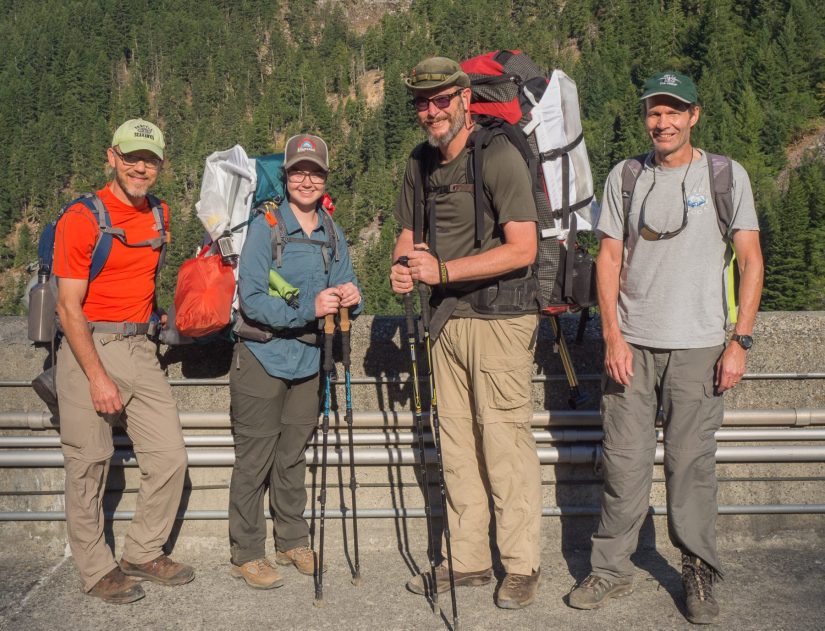
Maia Sosa Kapur
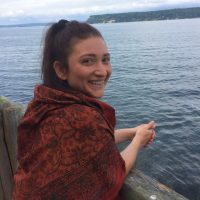 Dissertation
Dissertation
A Transboundary Management Strategy Evaluation for Northeast Pacific Sablefish
Sablefish are managed separately throughout the US West Coast, Canada, and Alaska, but scientists have suspected that the stock is actually well-mixed throughout the entire northeast pacific. Concurrent declines in this valuable fishery across the whole region inspired us to examine the result of considering spatial structure in the way we manage the population.
Advisers
André Punt
What is your best/favorite memory during your time in SAFS?
André’s intensive coding workshops at Friday Harbor Labs. I felt like I was in the center of the universe for population dynamics and the cafeteria food was AWESOME!
What was your favorite FISH class and why?
I loved to TA Tim Essington’s FISH 454 course. The students got to learn theory, application, and interpretation of ecological models at the same time, and the assignments were really well-designed. I learned a lot through teaching them!
What is your go-to comfort food?
Polenta with parmesan (well, mostly parmesan with some polenta).
What kind of things do you like to do when you’re not being a SAFS student?
Long distance running, reading fantasy/sci fi, and being at coffee shops.
Do you have any accomplishments and activities while at SAFS you would like to highlight?
Through the network I built at SAFS I was able to find a full-time job two years before graduating, balancing that with the PhD (plus a baby!) was certainly a large accomplishment for me. I also led or participated in multiple stock assessments used for management as part of SAFS coursework, and won a prestigious national fellowship to support my research.
Who would you like to thank/recognize and why?
André Punt and Melissa Haltuch, for going out of their way to bring me to SAFS, and supporting me through the various twists and turns of my graduate career. My wonderful husband for moving across the ocean for this dream, and my daughter for reminding me to play.
Do you have a favorite quote/saying?
“At the end of the day people won’t remember what you said or did, they will remember how you made them feel.” ― Maya Angelou.
Natalie Mastick
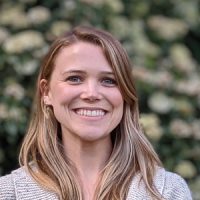 Dissertation
Dissertation
Long-term change in the burden of anisakid nematode parasites for marine mammal hosts
I determined how a common parasite of marine mammals has changed globally, regionally, and locally over time by tracking the change of parasite infections in the fish they eat. I also worked to determine how infected a local population of endangered killer whales is today, and how these infections might impact their health. My work is aimed to better understand how much of a threat parasitism is to marine mammals, especially at risk populations.
Advisers
Chelsea Wood
What is your best/favorite memory during your time in SAFS?
The Wood Lab’s bake-off! For prospective students day in 2020, each of our lab members baked a parasite-themed treat and the SAFS community voted on them. The winner got a golden tapeworm trophy. I didn’t win but it was a lot of fun grossing out the community.
What was your favorite FISH class and why?
I loved Historical Ecology; we were able to read and discuss these incredible papers detecting ecological changes through unconventional means. I learned that old photos, menus, museum collections, and art could be tools for discovering what past ecosystems looked like.
What kind of things do you like to do when you’re not being a SAFS student?
Working on craft projects, spending time outside, and hanging out with my dogs and husband.
Do you have any accomplishments and activities while at SAFS you would like to highlight?
While I was at SAFS, I got involved with the Burke Museum working in the Fish Collection and with the Exhibits team. I had an amazing time learning about what goes into working in different parts of a natural history museum, and I feel so lucky that I had those opportunities while at SAFS.
Who would you like to thank/recognize and why?
I would like to thank Chelsea for her endless support, enthusiasm and patience as I navigated the roller coaster of a PhD. She has been the ultimate hype-woman. I would also like to thank my husband Jeff for making the “life” part of my work-life balance so special and worth prioritizing. He kept me afloat during all of the hard parts.
Katie McElroy
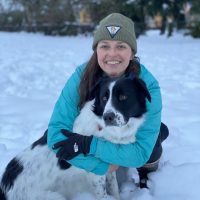 Dissertation
Dissertation
Applying the Ideal Free Distribution Theory to two mobile predators on Pacific salmon: Commercial fisheries and brown bears
Apex predators must track mobile prey throughout their environment, and for successful conservation and management of these predators, we must understand their foraging patterns. I applied the predictions of an ecological theory, the Ideal Free Distribution, to two highly mobile predators of sockeye salmon in Bristol Bay, Alaska: the commercial drift gillnet fishery and grizzly bears. I used the theory to gain insights into where and when the two predators moved to find salmon and what information they used to inform those decisions.
Advisers
Ray Hilborn and Tom Quinn
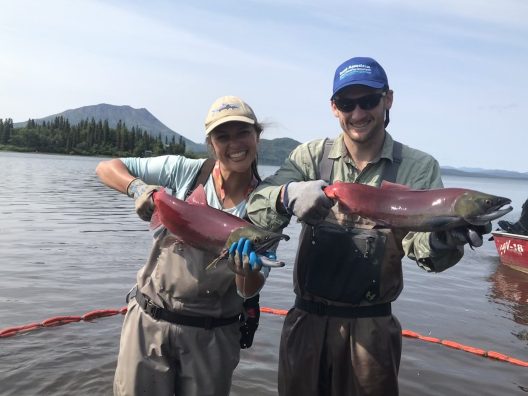
What is your best/favorite memory during your time in SAFS?
I loved the 5 summers I spent at the Alaska Salmon Program field station on Lake Aleknagik. I hiked the most beautiful mountains, carried a moose antler I found 5 miles down my favorite creek, talked with loons while on a sunset kayak, watched a moose get a bath from a paddleboard, learned to fly fish and caught the most beautiful rainbow trout, marveled at the sockeye return, and made countless delicious meals with friends, collaborators, and their families. I also was able to share my love for Bristol Bay with my husband and dad.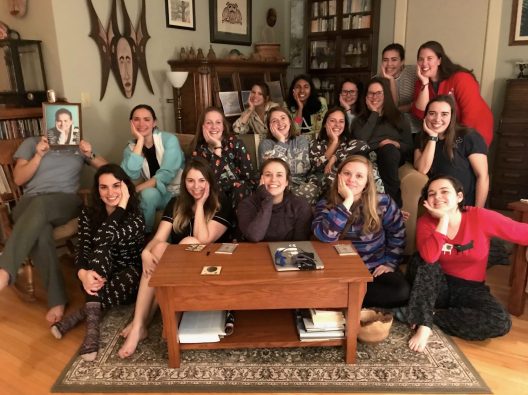
What was your favorite FISH class and why?
Definitely FISH 312, Fisheries Ecology. I TA’ed it twice during the pandemic and was impressed by the student’s independent research projects and learned so much about teaching from Chelsea Wood. And this quarter I had the pleasure of teaching it to 14 incredible students who made me fall in love with ecology all over again.
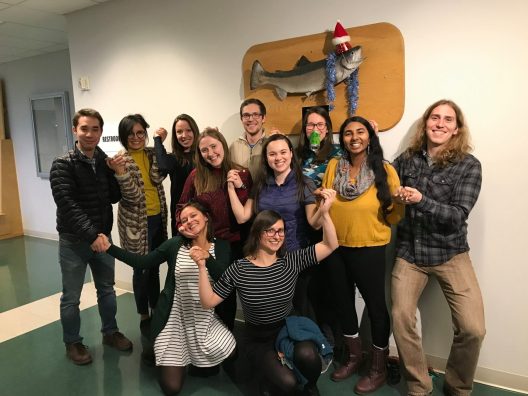 What is your go-to comfort food?
What is your go-to comfort food?
Goat cheese and non-dairy ice cream—obviously, not together!
What kind of things do you like to do when you’re not being a SAFS student?
Working on craft projects, spending time outside, and hanging out with my dogs and husbandI like to snowboard, surf, snorkel, tidepool, hike, backpack, and generally be outside with my husband, friends, and dog Domino. I also like to read, try local bakeries, and make custom cards for friends and family.
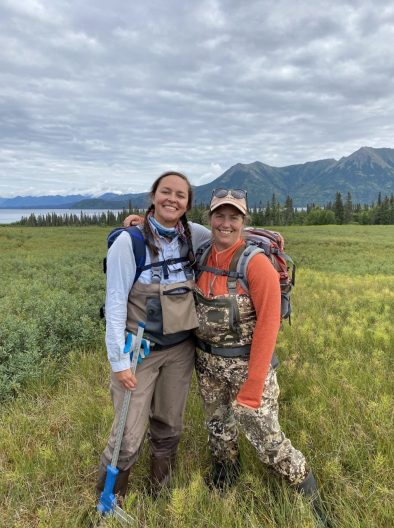 Who would you like to thank/recognize and why?
Who would you like to thank/recognize and why?
I want to thank my husband Colin for supporting me, making me laugh, and reminding me of the bigger picture. I also want to recognize my incredible family—my parents, my brother and his wife, my grandma, my aunt Mel, my inlaws, and the extended Monroy and Nicol/Greene/Healey families—for their constant love and encouragement. Thank you to the many SAFS communities I have gotten to be part of: SEAS, my cohort, ASP, my writing groups, and the Quinn and Hilborn labs. And finally thank you Tom and Ray, I wouldn’t be here without you!
Do you have a favorite quote/saying?
Nevertheless she persisted.
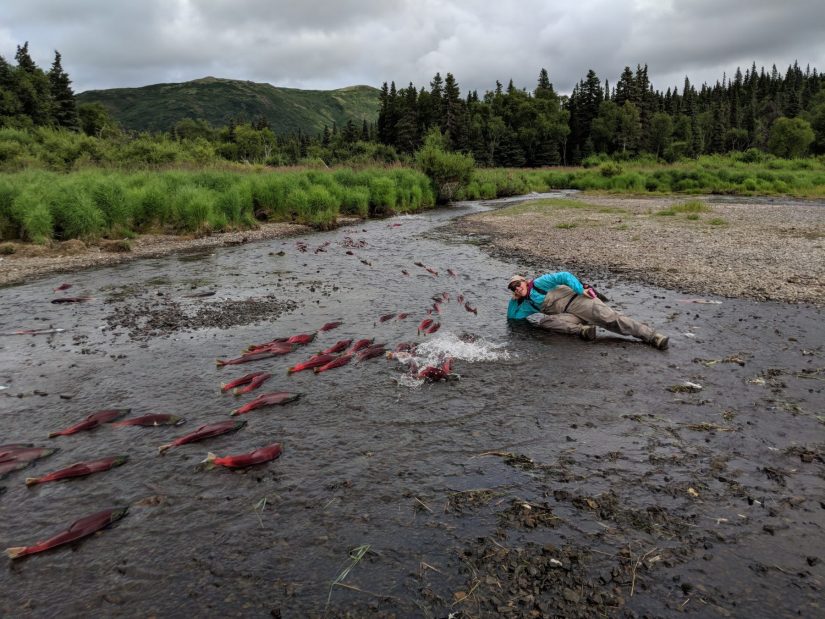
College of the Environment Graduation Gift
In appreciation of the 2023 College of the Environment graduating class, the College is partnering with the Campus Sustainability Fund to help fund the Resiliency Tunnel Project for the UW Farm, a studentpowered urban farm that provides locally grown produce to UW and the greater community through local partners and the UW Food Pantry. This gift will help fund the construction of a high tunnel, a USDA-approved method for season extension, to protect crops and extend the production season by multiple months. This project will incorporate small-scale solar and rainwater catchment systems and provide an educational space for the community. We are excited to support this project and the increased sustainability of our Husky community.
SAFS Graduation Gift
In honor of the 2023 graduating class, SAFS will make a donation to the Indigenous Wellness Research Institute (IWRI). The IWRI’s mission is to marshal community, tribal, academic, and governmental resources toward innovative, culture-centered interdisciplinary, collaborative social and behavioral research and education. The IWRI collaborates with Indigenous people in three areas: research, tribal capacity building, and knowledge sharing. The SAFS donation may be used for student support, capacity building, creating and maintaining collaborative relationships, and supporting culturally mandated protocol, such as gift giving and traditional feasts.
